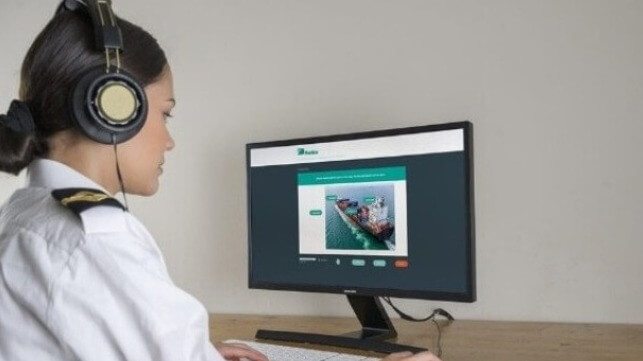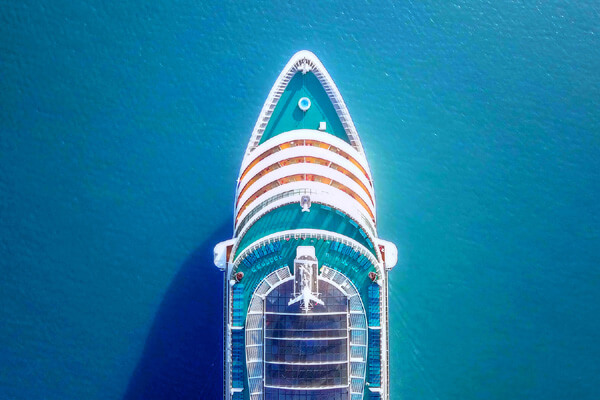Cruise Industry Faces Challenges of Sustainability and Crewing

With many of the major cruise brands reaching full fleet deployment, the cruise industry is back after its long pause and regaining its momentum. Working to recover from the effects of the pandemic, cruising however faces new challenges ranging from solutions to create a sustainable future to the difficulties of staffing and onboarding to support its rapid growth. To meet the current challenges, cruising is adopting new technologies and approaches to the issues that lay ahead.
 “The cruise industry’s visibility and the challenges it faces make it an interesting industry to work in today,” says Joost van Ree who draws on his background in maritime, simulations, and three years as Partner Relations Director for the Cruises Lines International Association (CLIA). He joined Ocean Technologies Group (OTG) in January 2022 to help the cruise industry leverage new forms of learning to meet its challenges. “The industry and cruise ships are so visible that they are the focus of a lot of attention from regulators and activists, driving the industry to be at the forefront of adopting new technologies.”
“The cruise industry’s visibility and the challenges it faces make it an interesting industry to work in today,” says Joost van Ree who draws on his background in maritime, simulations, and three years as Partner Relations Director for the Cruises Lines International Association (CLIA). He joined Ocean Technologies Group (OTG) in January 2022 to help the cruise industry leverage new forms of learning to meet its challenges. “The industry and cruise ships are so visible that they are the focus of a lot of attention from regulators and activists, driving the industry to be at the forefront of adopting new technologies.”
New Systems
While all the maritime sectors are looking for long-term solutions for green operations, the cruise sector has been an early adopter of technologies ranging from LNG-fueled ships to heat recovery plants, emissions scrubbers, batteries, wastewater systems, communications, shore power, and more. DNV for example calculates that a quarter of the cruise ship orderbook is for LNG-fueled passenger ships. Cruise lines are also working with shipyards, engine manufacturers, ports, and regulators to develop future solutions.
In addition to the massive investments these new systems require, they also bring new challenges. “Seafarers need to be trained on these new technologies and learn new ways of operating their ships to achieve the sustainability goals,” explains van Ree. “You can put all these new technologies on board a ship, but if people do not know how to effectively operate these systems it is useless.”
The rate of growth in cruising is multiplying the challenges. While the pandemic resulted in a rescheduling of future deliveries, the major cruise lines did not cancel any of their newbuild orders. The business will see between 10 and 20 new ships introduced per year till 2027. Expedition cruising, for example, is one of the fastest-growing segments, but with it comes the added challenges of operating in some of the most environmentally sensitive regions along with extra issues ranging from ice navigation to managing encounters with sea life and waste management.
Crewing Challenges
“While much of the attention is on green cruising, the second industry issue is a little less on the radar but the crew challenge is just as difficult,” says van Ree. “CLIA estimates that the cruise sector needs 73,000 new people per year to accommodate current growth. The figures are amazing and COVID compounded the challenge as people that were on board or in an established crew pool found new jobs during the shutdown or might be hesitant to return to sea. Added to this, many cruise lines had no option but to release a significant part of their shore-based staff during the pandemic. With the return to cruising, companies are having to rapidly rebuild entire shore and ship teams from scratch, not an easy challenge.”
While a commercial vessel such as a tanker or containership might have an average of 20 crewmembers, a large cruise ship can have upwards of 2,000 crewmembers and they all must have their safety training, STCW certificates, and be prepared and qualified to work at sea. Van Ree points out that the cruise industry is global in its hiring, often staffing a cruise ship with as many as 40 different nationalities. Having to turn to new and less familiar sources for crew, pre-employment assessment has become a critical tool.
Beyond having the proper number of people to operate the ships, having people with the right experience and skills is critical to providing a high-quality guest experience. Recruitment tools such as those developed by OTG can provide an accurate and objective picture of a candidate. Recruiters can assess a crewmember’s technical knowledge, English language proficiency, which is critical to interacting with guests, as well as ability, and personality profiling that can help in building the right teams. Using cloud-based simulation, OTG can help employers to assess the skills of deck and engine officers at scale. Using OTG’s pay-per-use model offers cruise lines a cost-effective approach accessible by the technical teams who are responsible for hiring and promotions.
Recruiters also need the ability to coordinate a broad range of documentation from certificates or required endorsements to medical and travel visas and other documentation for each candidate. Software tools provide the capability to manage the hiring and onboarding process as well as planning for future crewing needs. Crew management systems such as OTG’s Compas software provide the capability to process all this data freeing up crew managers to focus on planning crew rotations and ensuring smooth succession in all areas of the ship’s staffing.

Streamlining Onboarding
Once the right cruise candidates have been identified, getting them up to speed quickly places further pressure on talent management teams and on the training and onboarding programs that the cruise lines have traditionally used. While the cruise industry has historically been training beyond compliance, van Ree highlights the increased challenge of ensuring officers and crew have the right endorsements on their certificates or the ability to easily enhance or refresh their training. He points to software tools as helping the teams responsible for crew management to keep track and plan for requirements while e-learning helps provide rapid access to the required skills.
While some training has to happen in a physical training center, van Ree believes that e-learning is a solution to help cruise lines address their crewing challenges. He points out that the on-site duration of training programs can be reduced with e-learning components. Also, with training available online in the cloud, he says new crewmembers can complete elements such as familiarization training at home or while they are traveling to join their ships.
Onboarding people and familiarizing them with the way the organization operates and its values are becoming increasingly important. Companies are able to add their internally-developed content to the e-learning platform to help acquaint new employees with the corporate culture and ways of working. OTG also provides a broad e-learning library of more than 800 titles and with such a large focus on ESG in the cruise industry, there are many titles covering wellbeing, diversity and inclusion, cultural awareness, communication skills and leadership, all of which contribute to a positive onboard culture. Furthermore, survey tools help cruise lines to engage with crew to gather feedback and evaluate how people are responding to company initiatives.
New Approach to Training
E-learning technologies have already been accepted by the shipping industry. OTG’s Ocean Learning Platform, as an example, provides more than seven million e-learning training sessions each year. Many flag states already accept and approve e-learning and van Ree expects increasing recognition for e-learning among more flag states. The Maltese registry recently joined the UK’s Maritime & Coastguard Agency, the Bahamas Maritime Authority, and other leading flag states in recognizing e-learning, while OTG is also working to have e-learning incorporated into more flag states’ protocols.
Yet, while e-learning is gaining acceptance as a vital tool, van Ree also points to the need to adapt training to address the changing demographics of the workforce. Advancements in the format and delivery are critical to maximizing user engagement. “People today have much shorter attention spans and expect media-rich content. We believe in a blended learning approach utilizing video, micro learning and gamified content that uses scenarios in which we can test learner responses,” Van Ree explains.
“Going forward, I think cruising and other maritime sectors will employ a hybrid model using a combination of e-learning along with physical training centers for elements that require a presence or the interaction of teams in training,” says van Ree. “Knowledge centers, manufacturers, and vendors have the opportunity to extend the reach of their existing training content by partnering with e-learning platforms or to tap their experience using the video and production skills of the hosts to create content.”
The newest frontiers in learning management go beyond preparing crew to join the ship and ensuring their certificates and endorsements remain current. Van Ree highlights the possibilities of combining training and fleet management system data to identify where a lack of training could lead to operational issues.
To complete the build-back of its operations after the pandemic, the cruise sector will continue to trail blaze in the adoption of new technologies. While the overall fleet size is small compared to cargo fleets, the cruise sector’s reputation occupies a far higher public profile. All cruise lines’ success is largely dependent on the skills and training of their teams. Recruitment and training solutions will help the cruise industry to rebuild and retain its loyal guest following.
This article is sponsored by OTG. For more information, please visit https://www.oceantg.com/solutions-for-the-cruise-industry/.
The opinions expressed herein are the author's and not necessarily those of The Maritime Executive.
